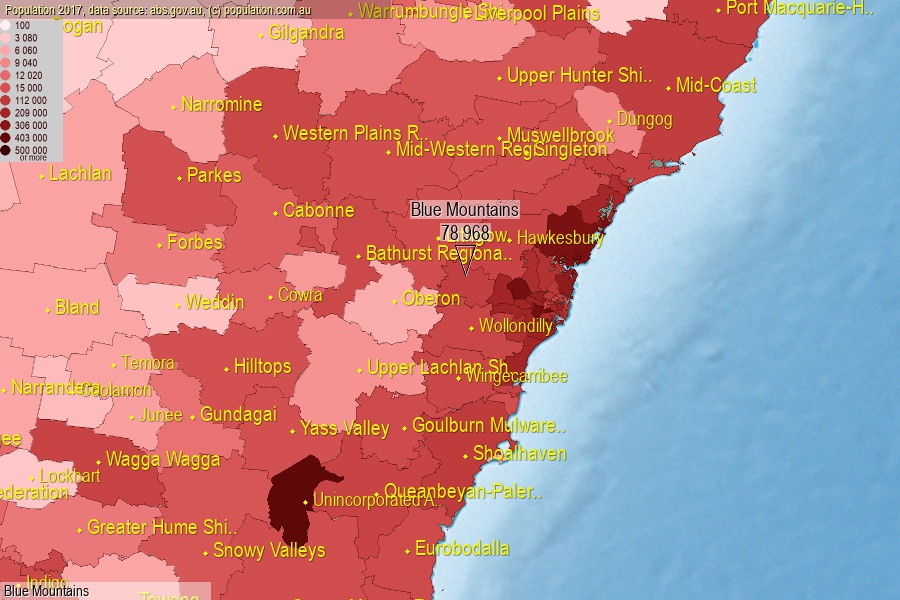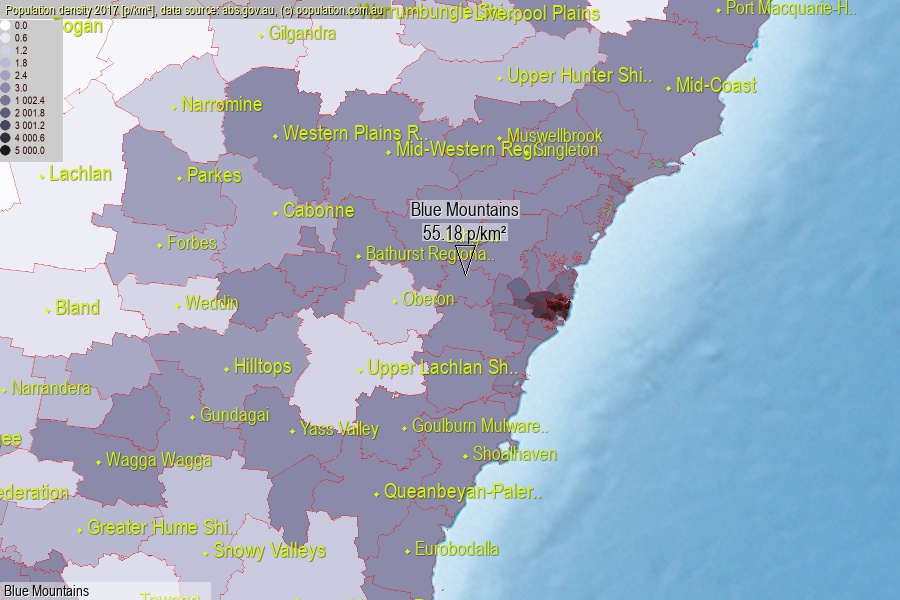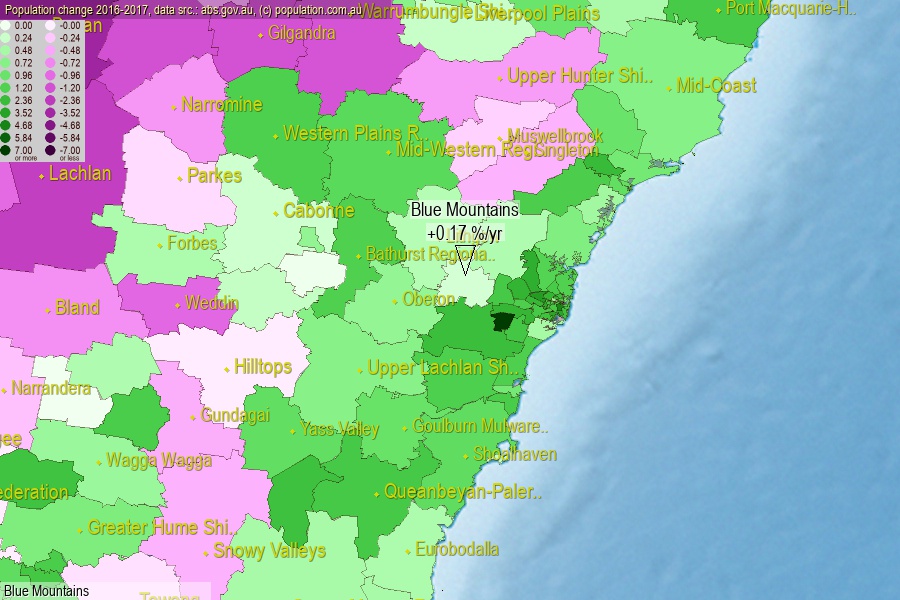 population.com.au
population.com.auLast official estimated population of Blue Mountains City (as Local Government Area) was 78 968 people (on 2017-06-30)[2]. This was 0.32% of total Australian population and 0.993% of NSW population. Area of Blue Mountains is 1 431.10 km², in this year population density was 55.18 p/km² . If population growth rate would be same as in period 2016-2017 (+0.17%/yr), Blue Mountains population in 2025 would be 80 040. [0]



Click to enlarge. Blue Mountains is located in the center of the images.
Population [people], population density [p./km²] and population change [%/year] [2]
[1996-2001] +0.44 %/Y
[2001-2002] +0.17 %/Y
[2002-2003] -0.01 %/Y
[2003-2004] -0.28 %/Y
[2004-2005] -0.61 %/Y
[2005-2006] -0.49 %/Y
[2006-2007] +0.79 %/Y
[2007-2008] +1.19 %/Y
[2008-2009] +0.99 %/Y
[2009-2010] +0.46 %/Y
[2010-2011] +0.42 %/Y
[2011-2012] -0.03 %/Y
[2012-2013] +0.22 %/Y
[2013-2014] +0.21 %/Y
[2014-2015] +0.03 %/Y
[2015-2016] -0.07 %/Y
[2016-2017] +0.17 %/Y
[0] Calculated with linear interpolation from officially estimated population
[1] Read more about LGA and Australian Statistical Geography Standard (ASGS) on abs.gov.au
[2] Population data from Australian Bureau of Statistics (Population and density: 2017; change: 2016-2017)
[3] Digital Boundaries: Australian Statistical Geography Standard (ASGS) 2016.